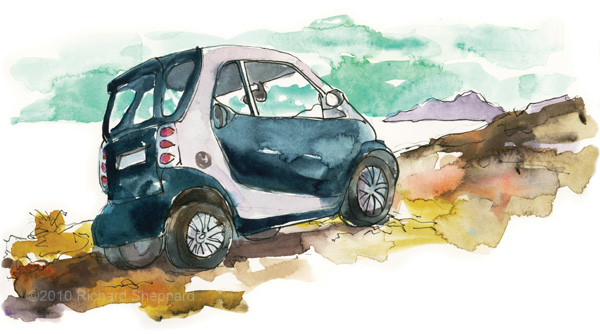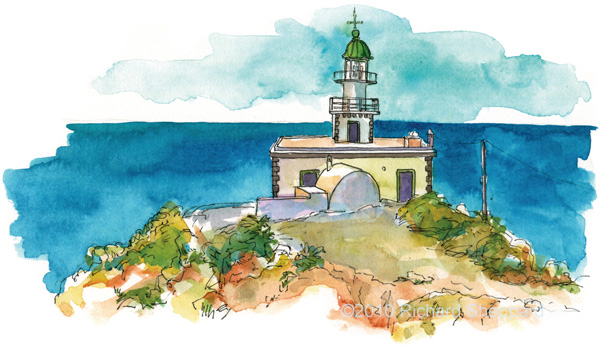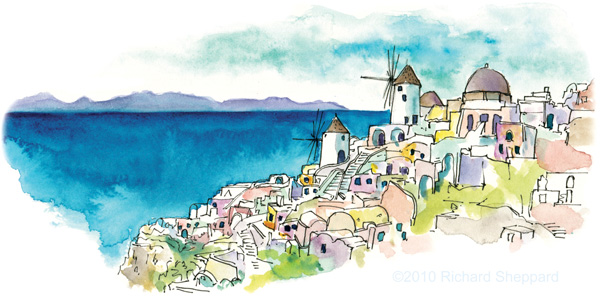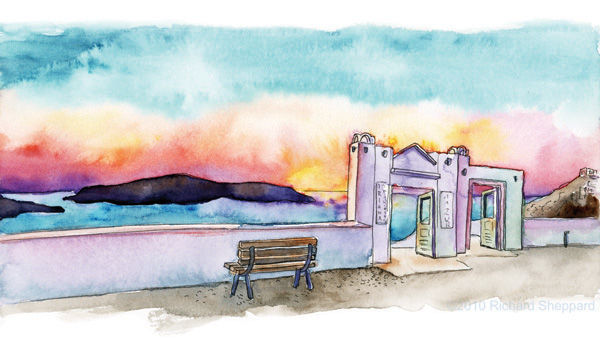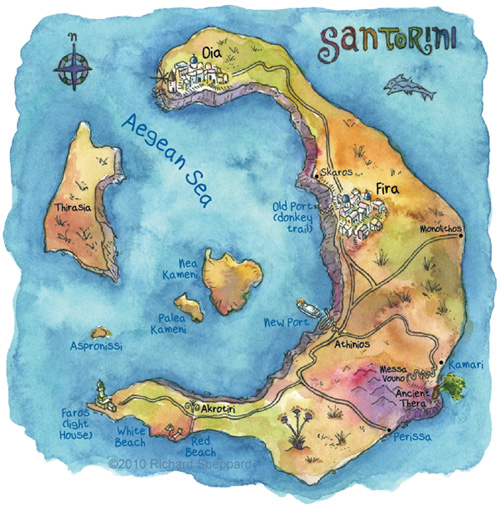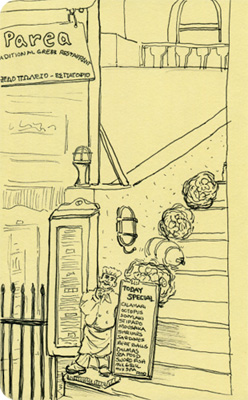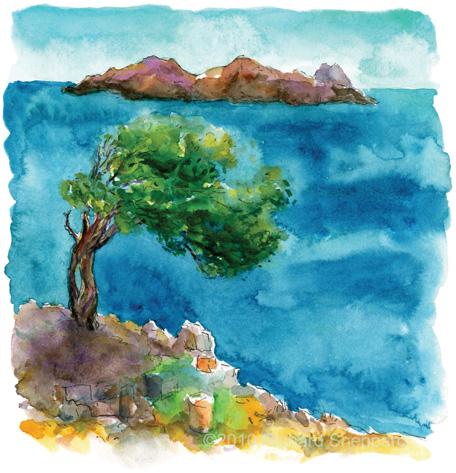 (Excerpt from my book, The Artist on the Road: Impressions of Greece)
(Excerpt from my book, The Artist on the Road: Impressions of Greece)
Ancient Thera has always been a windswept place, but today’s gentle breeze is a welcome change from yesterday’s weather. The ruins are spread along the northern side of the mountain, and thus, somewhat protected from southwestern wind. I find a sheltered place near a windswept tree and begin to paint. It seems an appropriate spot from which to describe this place.
The island of Santorini had been uninhabited since the volcano erupted circa 1600 BC and destroyed the island civilization. Then, according to Greek mythology, Kadmos, an ancestor of Oedipus, arrived here in 1400 BC while searching for his sister Europa and founded a colony.
Ancient Thera takes its name from Theras, a descendent of Kadmos and Oedipus, the king of Thebes who inadvertently killed his father and married his mother. Theras came here and was accepted as king because of his lineage.
Thera’s ruins are extensive and spread across the top of Messa Vouno. The center of the city was formed around its agora (about the size of a football field), and its temples, Stoa, and theatre were at the edge of the cliff, with homes along the interior.
After traversing the rest of the ruins, we descend the switchbacks and continue our tour around the island.
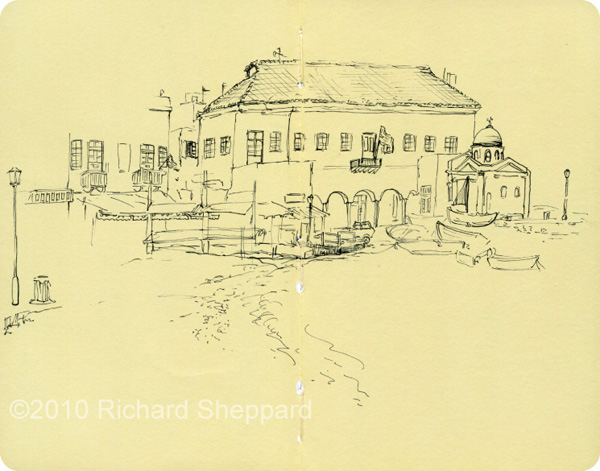 I walk down towards the docks looking for something else interesting to draw. The narrow city streets are a maze to navigate, especially with tall buildings obstructing my view of the bay. But I follow the roads that lead downhill, and without too much trouble, I’m able to find my way. Parking myself at the edge of the bay, I sit atop stone steps that descend to the sandy beach below. Shallow waves lap up on the shore leaving blankets of bubbles behind. Before me lays the Old Port of Mykonos, with its buildings huddled close together at the edge of the sea.
I walk down towards the docks looking for something else interesting to draw. The narrow city streets are a maze to navigate, especially with tall buildings obstructing my view of the bay. But I follow the roads that lead downhill, and without too much trouble, I’m able to find my way. Parking myself at the edge of the bay, I sit atop stone steps that descend to the sandy beach below. Shallow waves lap up on the shore leaving blankets of bubbles behind. Before me lays the Old Port of Mykonos, with its buildings huddled close together at the edge of the sea.